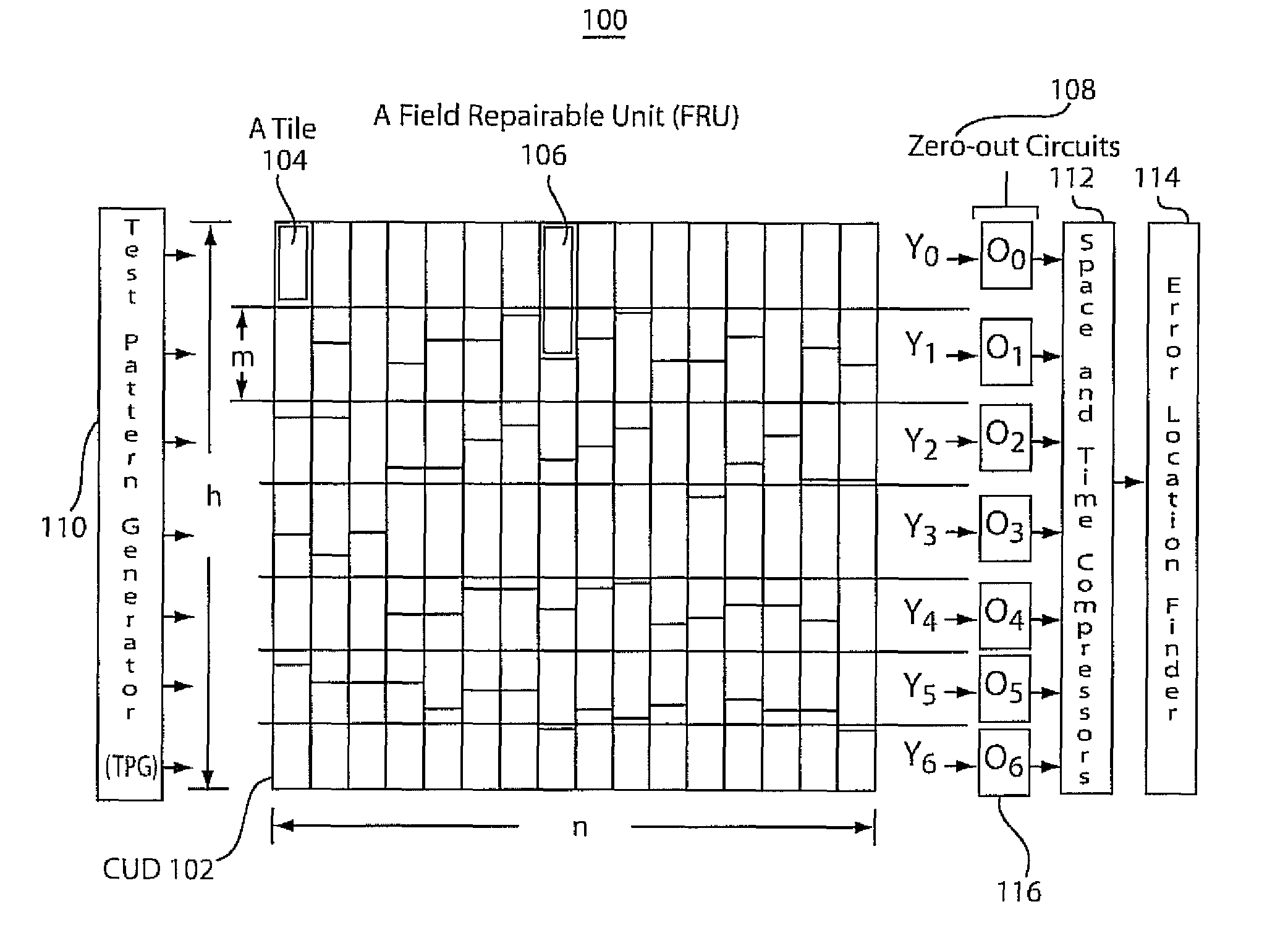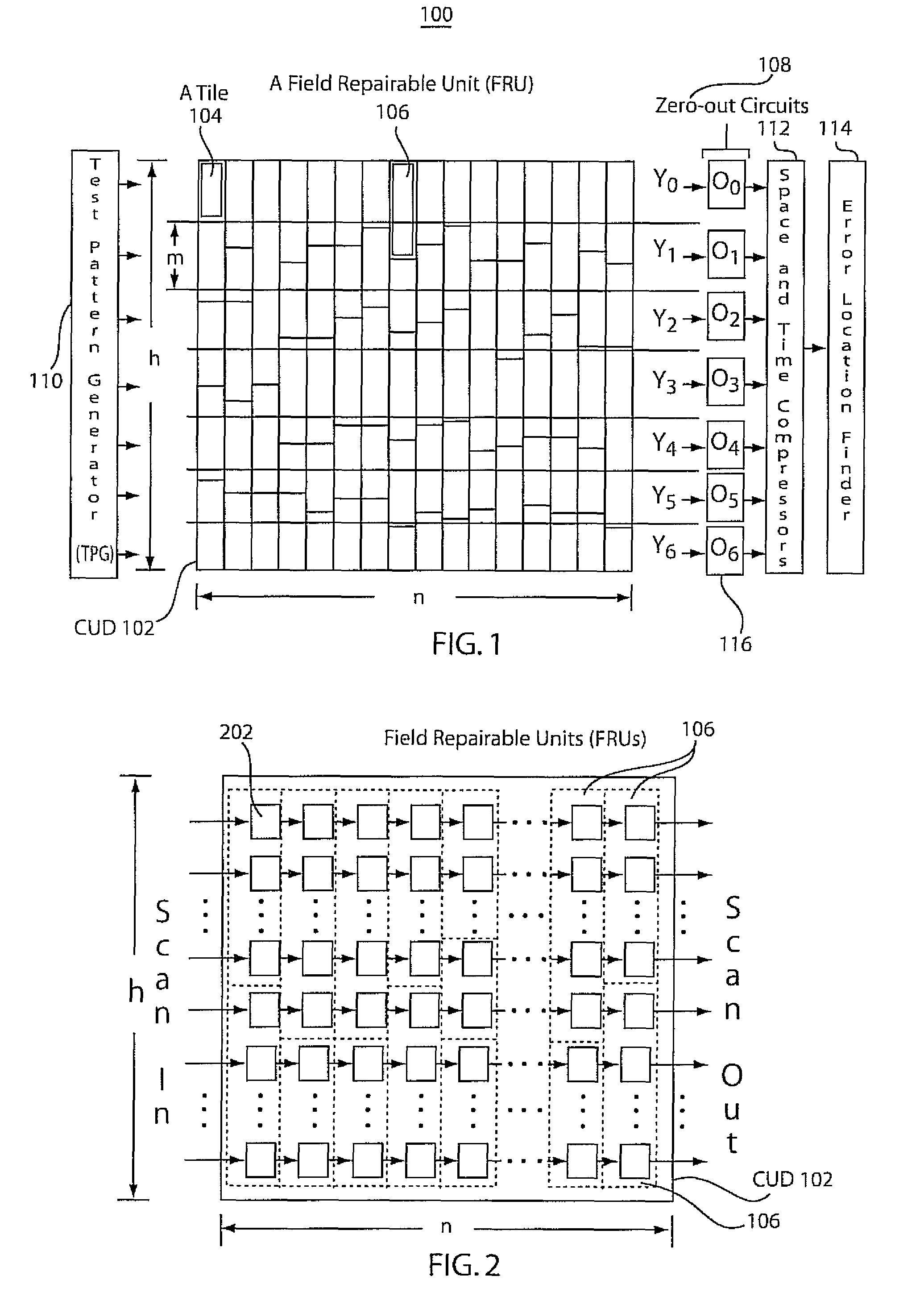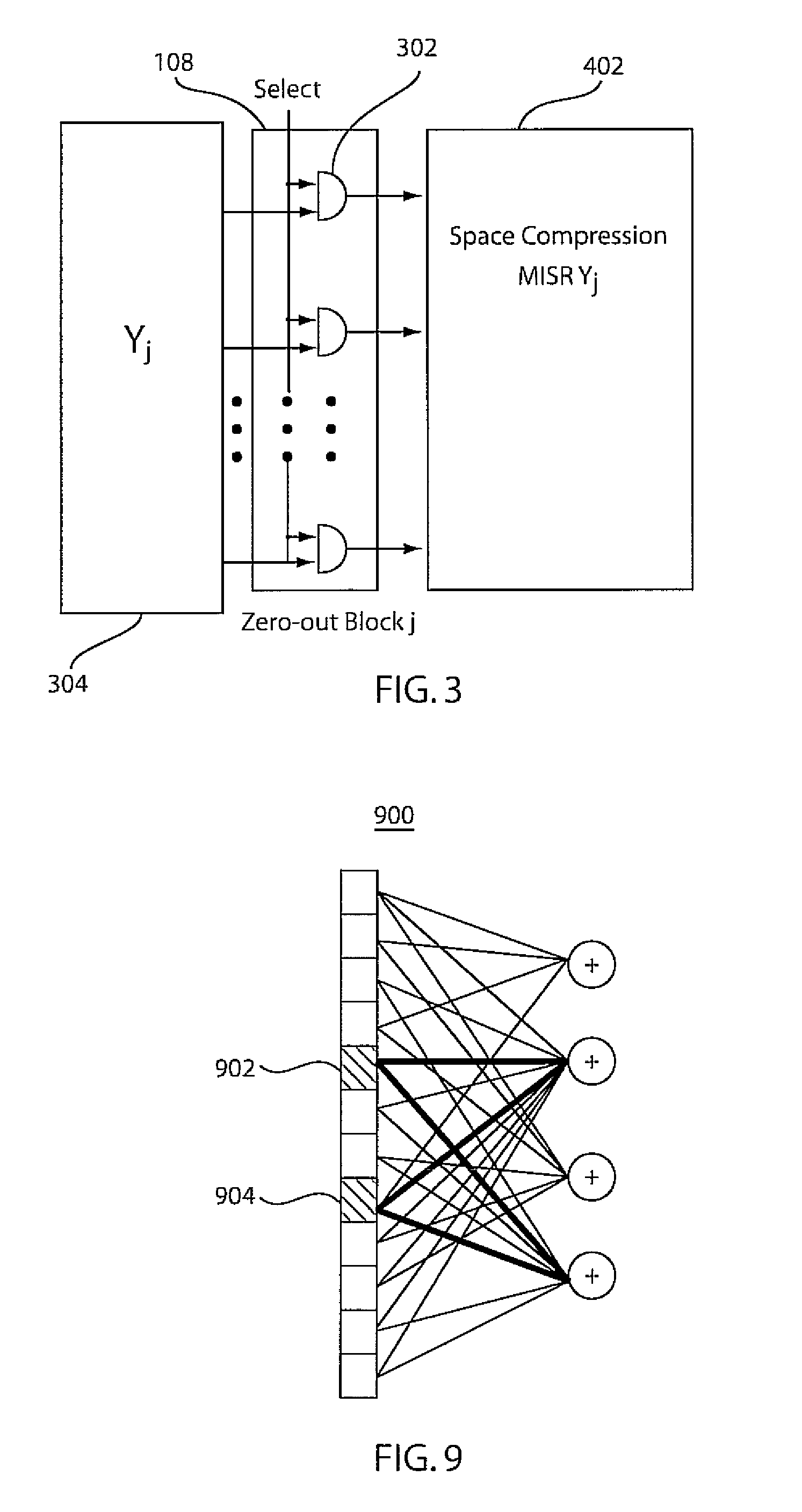Systems and methods for locating defective components of a circuit
a technology of defective components and circuits, applied in the field of diagnostics, can solve the problems of reducing the reliability of traditional reliability circuit screening methods, affecting the reliability of chips, and increasing scaling, so as to reduce the time for diagnosis, improve efficiency, and reduce hardware overhead
- Summary
- Abstract
- Description
- Claims
- Application Information
AI Technical Summary
Benefits of technology
Problems solved by technology
Method used
Image
Examples
Embodiment Construction
[0023]As noted above, most current testing using BISR is performed during manufacturing of circuits rather than in the field. If repairs are performed in the field as well as at manufacturing test sites, testing costs may be significantly reduced, as high reliability will be maintained even with less perfect screening. While the cost of testing transistors has been relatively constant, the cost of manufacturing a transistor has been significantly reduced as a result of persistent scaling. Hence, it would be economical to use some silicon area for field repair capability to reduce test cost. Implementing self-repair for random logics in regular application-specific integrated circuit (ASIC) devices, which have no regularity and are not field-reconfigurable, is much more difficult.
[0024]To repair defective parts by BISR, defective parts should be located through a self-diagnosis process. This includes comparing responses of the circuit under diagnosis (CUD) with responses of a defect ...
PUM
 Login to View More
Login to View More Abstract
Description
Claims
Application Information
 Login to View More
Login to View More - R&D
- Intellectual Property
- Life Sciences
- Materials
- Tech Scout
- Unparalleled Data Quality
- Higher Quality Content
- 60% Fewer Hallucinations
Browse by: Latest US Patents, China's latest patents, Technical Efficacy Thesaurus, Application Domain, Technology Topic, Popular Technical Reports.
© 2025 PatSnap. All rights reserved.Legal|Privacy policy|Modern Slavery Act Transparency Statement|Sitemap|About US| Contact US: help@patsnap.com



